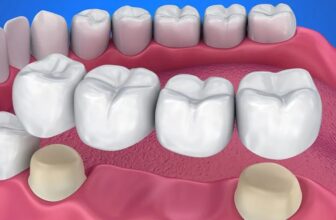
Dental braces have been a cornerstone of orthodontic treatment for decades, offering a reliable solution for correcting misaligned teeth and improving oral health. Whether it’s for cosmetic purposes or to address functional issues, braces can make a significant impact on a person’s smile and overall well-being. This article explores the types of dental braces, the benefits they offer, the treatment process, and considerations for those considering braces.
Types of Dental Braces
- Traditional Metal Braces: These are the most common type of braces, made of high-grade stainless steel. Metal braces consist of brackets attached to each tooth, connected by an archwire. The wire is periodically tightened to gradually move the teeth into the desired position.
- Ceramic Braces: Ceramic braces function similarly to metal braces but use clear or tooth-colored brackets that blend with the natural color of teeth, making them less noticeable. They are a popular choice for those who want a more discreet orthodontic treatment.
- Lingual Braces: These braces are similar to traditional metal braces but are attached to the back of the teeth (the lingual side) instead of the front. This makes them virtually invisible from the outside, though they can be more challenging to clean and adjust.
- Self-Ligating Braces: Self-ligating braces use a specialized clip instead of elastic bands to hold the archwire in place. This design reduces friction and can result in shorter treatment times and fewer adjustments.
- Clear Aligners: Clear aligners, such as Invisalign, are a popular alternative to traditional braces. They consist of a series of custom-made, removable trays that gradually shift the teeth into place. Aligners are virtually invisible and offer greater comfort and convenience, though they may not be suitable for all types of orthodontic issues.
Benefits of Dental Braces
- Improved Aesthetics: One of the primary reasons people choose braces is to enhance the appearance of their smile. Correcting crooked, crowded, or gapped teeth can significantly boost self-esteem and confidence.
- Better Oral Health: Misaligned teeth can create areas that are difficult to clean, increasing the risk of cavities and gum disease. Straightening teeth with braces can improve oral hygiene and overall dental health.
- Enhanced Functionality: Braces can correct bite issues such as overbite, underbite, crossbite, and open bite. Properly aligned teeth and jaws improve chewing and speaking functions.
- Prevention of Future Dental Problems: Addressing misalignment issues early can prevent more severe problems later, such as tooth wear, jaw pain, and temporomandibular joint (TMJ) disorders.
- Long-Term Savings: Investing in braces can save money in the long run by preventing more extensive and costly dental treatments that might be needed to address complications from misaligned teeth.
The Dental Braces Treatment Process
- Initial Consultation: The process begins with a comprehensive examination by an orthodontist, including X-rays, photographs, and impressions of the teeth. This assessment helps determine the best treatment plan based on the individual’s needs.
- Placement of Braces: For traditional braces, the orthodontist will clean and dry the teeth before applying a special adhesive to attach the brackets. The archwire is then threaded through the brackets and secured with elastic bands or clips.
- Adjustment Visits: Periodic visits to the orthodontist are necessary to adjust the braces and ensure the teeth are moving as planned. Adjustments typically occur every 4-8 weeks.
- Oral Care and Maintenance: Maintaining good oral hygiene is crucial during orthodontic treatment. Patients should brush and floss regularly, use special tools like interdental brushes and water flossers, and avoid foods that can damage the braces.
- Completion and Retention: Once the teeth have moved into the desired position, the braces are removed. The orthodontist will then provide retainers to maintain the new alignment. Wearing retainers as instructed is essential to prevent the teeth from shifting back to their original positions.
Considerations for Potential Candidates
- Age: Braces are effective for both children and adults. However, treatment is often quicker and more efficient in younger patients whose jaws are still growing.
- Severity of Misalignment: The type and severity of the orthodontic issue will determine the most suitable type of braces. Severe misalignments might require traditional braces or other specialized treatments.
- Lifestyle and Preferences: Patients should consider their lifestyle and aesthetic preferences when choosing the type of braces. For example, clear aligners offer more convenience for those who play sports or musical instruments.
- Cost and Insurance: The cost of braces varies depending on the type and duration of treatment. Many dental insurance plans cover part of the cost, and payment plans are often available to make treatment more affordable.
Conclusion
Dental braces are a proven and effective solution for achieving a healthy, beautiful smile. By understanding the different types of braces, the benefits they offer, and the treatment process, individuals can make informed decisions about their orthodontic care. Consulting with a qualified orthodontist is the first step toward transforming one’s smile and enhancing overall oral health. With advancements in orthodontic technology, there are now more options than ever to achieve the desired results comfortably and efficiently.







